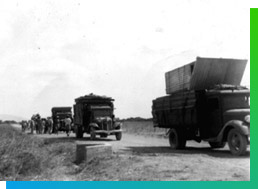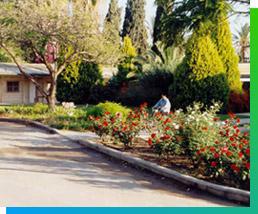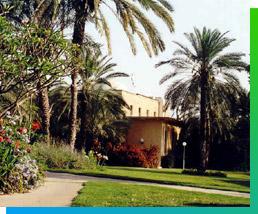
HISTORY
From 1967 to 1970, following the Six Day War, the kibbutz was the object of continual shelling and terrorist attacks during the War of Attrition.

After the Six Day War, members of Tirat Zvi were free to apply their energies and thought to the development of its economy.
After much 'hit-and-miss' experimentation, the following branches of agriculture were found to be successful and profitable: wheat, cotton, carrots, potatoes, dates, olives, fish farming, and turkeys. As a by-product of our large date grove, Tirat Zvi markets large quantities of "Lulavim" every year before Succoth.
Along with agriculture, Tirat Zvi's factory for production of sausage and smoked meats - "Tiv" - greatly expanded, marketing its high quality products to all parts of the country and the world. The factory's work force is composed of seventy kibbutz members and one hundred and fifty outside employees, most of whom are from the neighboring town ofBet Shean.
New branches recently came into being: "Tiv Beiti" ("Home Tiv") supplies meals to institutions and for social events; "Iruach Kafri" ("Rural Hospitality") - comfortable apartments for weekday, Shabbat, and holiday vacations; "Derech HaTamar" ("The Road of the Date") - guided tours of the local area; "Collage" and "Menno Designs" - stained glass artwork and a variety of holistic therapies.

The Kibbutz founders came to Israel (then Palestine) from central Europe (Poland, Germany, and Romania) and were subsequently joined during the following decades by immigrants from England, North America, groups of the Israel B'nei Akiva Youth Organization ("Geulim", "Nechalim", "Shachal", "Yachdav", "Tsurim", "Kissufim", "Nechusah"), and individuals from all from all over the world.
All Jewish ethnic groups are woven into our demographic fabric. Current population numbers approximately seven hundred persons, two hundred and seventy of which are children, Youth Aliya students, and temporary residents.
In recent years, the kibbutz has encouraged young families to make their home on the kibbutz as permanent residents, and as a result of this strategic change, the kindergartens once again are full to overflowing, and toddlers take their daily walks along the paths.
The last decade has seen the construction and growth of "Atereth Zvi" - a chronic care facility which provides full support for incapacitated members.
Soon after the establishment of the State of Israel, the children of Tirat Zvi began to attend theRegionalSchoolof the Religious Kibbutz Movement in theBethSheanValley.
The school provides twelve years of education, full matriculation, and offers it's students academic and vocational tracks. Every young person born on the kibbutz is entitled to a university education or it's equivalent, and is free to decide how and when he or she will exercise this right.
In 1977, the children of the children left the communal children houses, to live in their parents' homes. This, of course, necessitated enlargement and modification of many homes.
A Youth Aliya group of thirty teenagers dorm and receive their education in Tirat Zvi. They complete high school matriculation, work in the kibbutz, and benefit from an active social environment.

Members participate in varied special interest groups, classes, choirs, and athletic activities both in the kibbutz and at the Regional Council. A rich cultural program includes lectures, hikes, "homemade" theatrical productions, holiday programs, etc.
Approximately seventy members study at institutions of higher education throughout the country.
Like all other kibbutzim in our region, the settlement is surrounded by a security fence. Many bomb shelters, long inactive, dot the kibbutz.
In winter one must not miss the blooming of the irises; the lush vegetation on the shores of the Jordan River; myriad migrating water fowl resting in the fish ponds; the scale model of "HaTira" - the kibbutz as it was in its initial years; the "slik" - the clandestine weapons cache of the pre-State days; and the rich and complete archives.